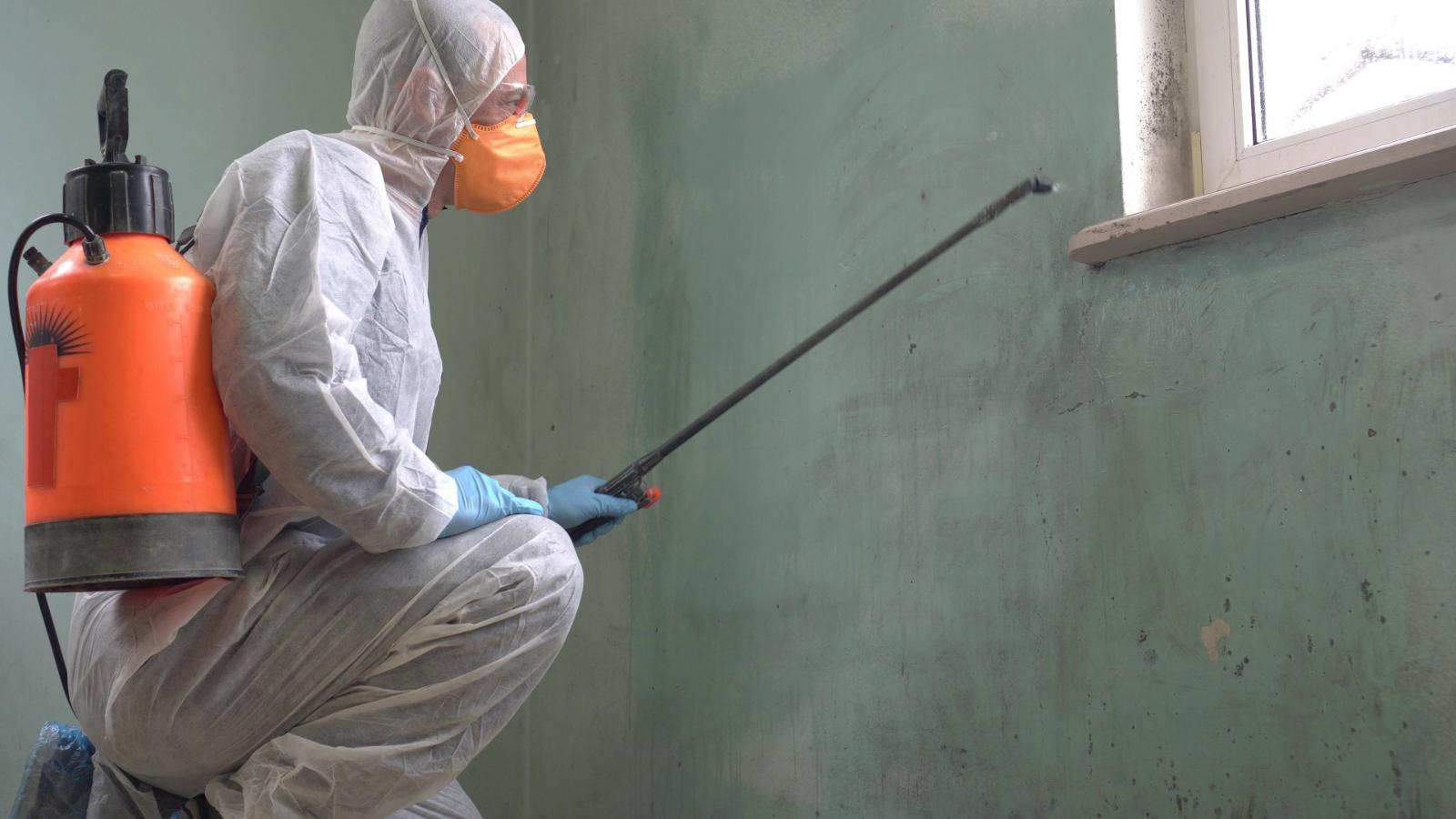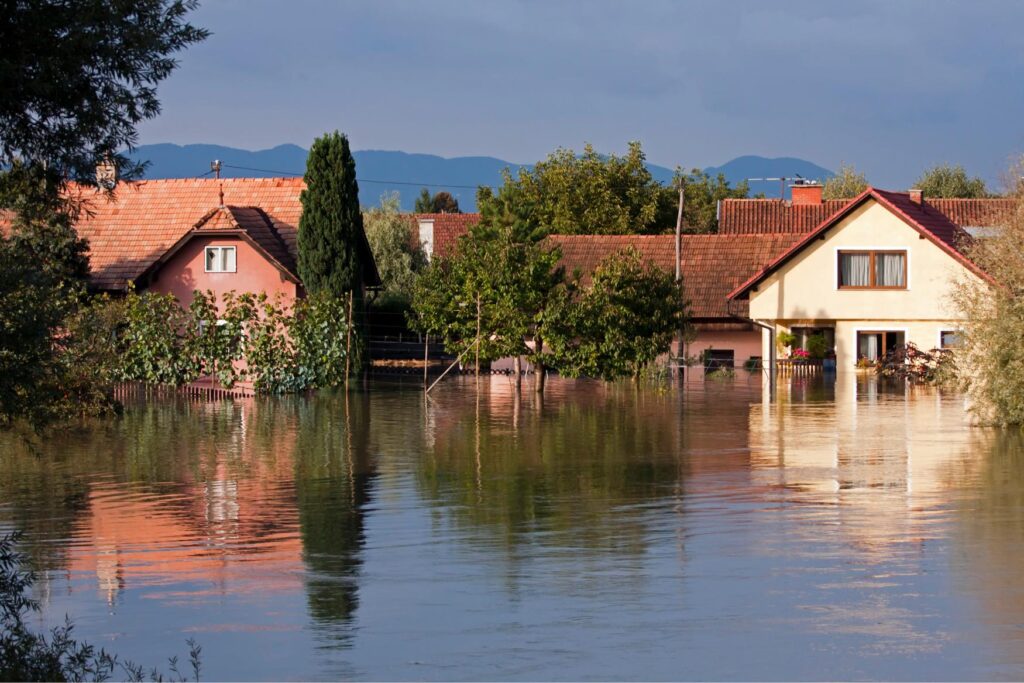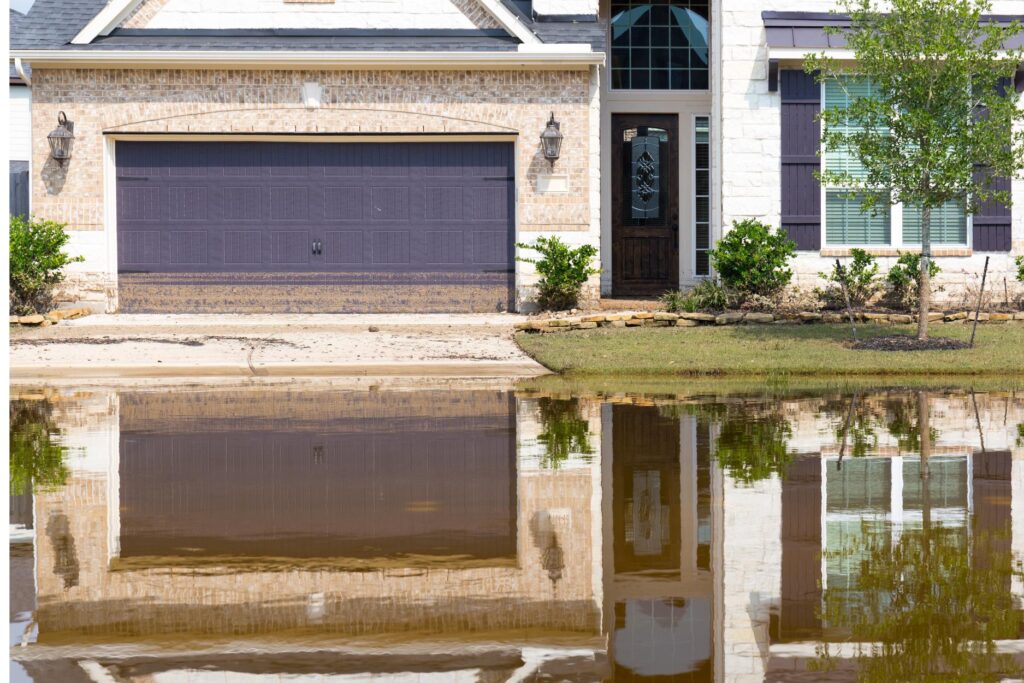Contents
When dealing with mold removal post-flood, you must be strategic and thorough in your approach. Each step plays a crucial role in successful remediation, from evaluating the extent of mold infestation to implementing effective ventilation and dehumidification techniques. But what about the often-overlooked aspect of preventing future mold growth? Stay tuned to discover some essential tips to help you safeguard your home against mold re-infestation and maintain a healthy living environment for you and your loved ones.
Key Takeaways
- Assess the severity of mold infestation to determine the extent of remediation needed.
- Utilize proper containment strategies to isolate affected areas and prevent mold spread.
- Thoroughly clean and disinfect surfaces using EPA-approved cleaners to eliminate mold.
- Employ dehumidification methods to control moisture levels and inhibit mold growth.
- Remove all mold-infested materials carefully to prevent further contamination.
Assessing the Mold Infestation
To accurately evaluate the mold infestation post-flood, start by inspecting all areas exposed to water for any visible signs of mold growth. Assessing severity is vital to determine the extent of the infestation. Utilize proper mold inspection techniques such as visually examining walls, ceilings, floors, and hidden spaces like behind furniture or inside cabinets. Look for discoloration, water stains, or a musty odor, as these are common indicators of mold presence.
When evaluating the severity of the mold infestation, consider the size of the affected area, the type of mold present, and any existing health issues that occupants may have. Take note of any areas with extensive mold growth or structural damage, as these may require professional remediation.
Using precise mold inspection techniques will help you accurately evaluate the situation and plan the necessary steps for mold removal. Remember, early detection and evaluation can prevent further damage and ensure a safe living environment for you and your family.
Containment Strategies for Mold
Effective containment strategies are essential in preventing the spread of mold during the removal process. When dealing with mold post-flood, it’s vital to establish proper mold containment measures to avoid further contamination and health risks.
One of the primary post-flood strategies for mold containment is isolating the affected area. This can be achieved by closing off the contaminated space with plastic sheeting and creating barriers to prevent mold spores from spreading to clean areas.
Moreover, implementing negative air pressure can help contain mold within the isolated area. By using fans and air filtration devices that exhaust air outside, you can prevent mold spores from circulating to other parts of the building. Additionally, sealing off HVAC vents and ducts can further prevent mold spores from entering the ventilation system and spreading to different areas.
Proper Ventilation Techniques
To effectively combat mold post-flood, ensuring proper ventilation is essential.
You can improve air circulation by using dehumidifiers to aid in the drying process.
Additionally, incorporating natural ventilation methods like opening windows and using fans can help in reducing moisture levels and preventing mold growth.
Air Circulation Importance
Facilitate proper air circulation in flooded areas by strategically placing fans and opening windows to promote faster drying and prevent mold growth. Improving airflow and maximizing ventilation are important in preventing mold post-flooding. Adequate air circulation helps reduce moisture levels, which in turn inhibits mold growth. Here is a simple guide to help you enhance air circulation in your space:
| Air Circulation Tips | Description | Benefits |
|---|---|---|
| Use Fans | Place fans strategically around the area to keep air moving. | Prevents stagnant air and aids in faster drying. |
| Open Windows | Open windows to allow fresh air to come in and circulate. | Helps in reducing humidity levels and expelling stale air. |
| Avoid Blocking Vents | Make sure that vents are not obstructed by furniture or objects. | Allows for proper airflow and ventilation throughout the space. |
Implementing these methods will help create an environment less conducive to mold growth.
Dehumidifiers Aid Ventilation
Utilize dehumidifiers to enhance ventilation and control moisture levels effectively in flooded areas, aiding in the prevention of mold growth. Dehumidifiers play an important role in maintaining proper indoor air quality post-flooding. By reducing humidity levels, dehumidifiers help create an environment less conducive to mold proliferation.
To maximize their importance, make sure to conduct regular dehumidifier maintenance by cleaning filters and emptying water tanks as needed. Proper maintenance ensures excellent performance and prolongs the lifespan of the dehumidifier.
The benefits of enhanced ventilation through dehumidifiers include improved air circulation, decreased moisture accumulation, and, ultimately, a reduction in mold growth. By incorporating dehumidifiers into your post-flood cleanup routine, you can greatly reduce the risk of mold infestations.
Natural Ventilation Methods
Improving airflow through natural ventilation methods is crucial for reducing mold growth in flood-affected areas. To achieve this, consider implementing the following strategies:
Natural air circulation: Utilize windows, doors, and vents strategically to allow fresh air to flow through the space, reducing moisture levels.
- Energy-efficient methods: Opt for natural ventilation techniques that don’t heavily depend on electricity consumption, which will help
the environment and your utility bills.
Sustainable ventilation: Choose eco-friendly approaches such as installing roof vents or utilizing natural wind patterns to promote air movement.
Implement proper ventilation: Make sure that all areas of the affected space are adequately ventilated to prevent stagnant air, which can lead to mold growth.
Cleaning and Disinfecting Surfaces
Start by thoroughly cleaning and disinfecting all surfaces affected by the flood to prevent mold growth and establish a safe environment. Use suitable cleaning techniques and disinfectants to make certain that surfaces are free from mold spores and contaminants. Below is a table highlighting key points for effective surface disinfection and cleaning:
| Cleaning and Disinfection Tips | Description | Benefits |
|---|---|---|
| Use EPA-approved cleaners | These cleaners are specifically formulated to eliminate mold and bacteria. | Ensures thorough disinfection. |
| Scrub surfaces with brushes | Scrubbing helps remove dirt, mold, and other contaminants effectively. | Enhances the cleaning process. |
| Allow proper drying time | Ensure surfaces are completely dry to prevent mold regrowth. | Prevents mold from returning. |
| Ventilate the area | Proper ventilation aids in drying and prevents moisture buildup. | Helps maintain a dry environment. |
| Dispose of contaminated items | Items that are extensively damaged by water should be safely discarded. | Prevents further contamination. |
Dehumidification Methods
After thoroughly cleaning and disinfecting surfaces post-flood, the focus shifts to implementing effective dehumidification methods to eliminate excess moisture and prevent mold growth. To achieve this, consider the following:
Humidity Control: Monitor the humidity levels in the affected area regularly using a hygrometer. Ideally, maintain indoor humidity below 60% to inhibit mold growth.
Utilize Drying Techniques: Employ air movers and dehumidifiers to speed up the drying process. Proper ventilation is essential to make sure moisture is removed efficiently.
Focus on Absorbent Materials: Pay special attention to items like carpets, upholstery, and drywall that are prone to retaining moisture. Remove and dry these materials thoroughly.
Inspect Hidden Spaces: Check hidden areas such as wall cavities and under flooring for trapped moisture. Use specialized equipment like borescopes to detect hidden dampness.
Utilizing HEPA Filtration
Utilize HEPA filtration systems to effectively capture and remove mold spores and other airborne contaminants during the post-flood remediation process. HEPA filters, or High-Efficiency Particulate Air filters, are renowned for their ability to trap tiny particles, making them an ideal tool for post-flood restoration. Here are some benefits of incorporating HEPA filtration into your mold removal process:
| HEPA Filter Benefits | |
|---|---|
| * Removes Mold Spores | * Traps 99.97% of particles as small as 0.3 microns, including mold spores, ensuring cleaner air. |
| * Eliminates Allergens | * Helps in removing allergens like dust mites, pet dander, and pollen, improving indoor air quality. |
| * Reduces Odors | * Captures odor-causing particles, helping to eliminate musty smells often associated with mold growth. |
| * Improves Air Quality | * Enhances overall air quality by reducing the number of airborne contaminants, promoting a healthier environment. |
Incorporating HEPA filtration systems into your post-flood restoration process can significantly aid in removing mold spores and improving the air quality in your home.
Removing Mold-Infested Materials
Removing materials infested with mold is an essential step in post-flood remediation to prevent further contamination and establish a safe environment for occupants. When dealing with mold-infested materials, it’s vital to follow proper protocols to ensure effective mold removal and safe material disposal.
Here are some key steps to guide you through this process:
Assessment: Begin by evaluating the extent of mold infestation on materials to determine salvageable items from those that require disposal.
Containment: Before removal, create a containment area by sealing off the affected space to prevent mold spores from spreading to uncontaminated areas.
Removal: Carefully eliminate all mold-infested materials, such as drywall, insulation, carpeting, and furniture, ensuring thorough elimination of visible and hidden mold growth.
Disposal: Dispose of the removed materials following local regulations for hazardous waste disposal to prevent environmental contamination and health risks.
Following these steps diligently will aid in effective mold removal and proper material disposal, contributing to a healthier indoor environment post-flood.
Preventing Future Mold Growth
To prevent future mold growth, concentrate on maintaining ideal moisture levels through effective moisture control strategies.
Guarantee proper ventilation and airflow in your living spaces to discourage mold spores from settling and multiplying.
Incorporating regular cleaning routines can also help prevent mold infestations by removing potential food sources for mold to thrive.
Moisture Control Strategies
Implementing effective moisture control strategies is critical for preventing future mold growth in flood-affected areas. To ensure your space remains mold-free, consider the following tips:
Utilize Proper Drying Techniques: Swiftly dry out affected areas using dehumidifiers, fans, and open windows to reduce moisture levels.
Maintain Humidity Control: Keep indoor humidity below 60% to inhibit mold growth.
Implement Moisture Management: Regularly inspect and repair leaks in plumbing, roofs, and windows to prevent water seepage.
Follow Prevention Tips: Use vapor barriers in crawl spaces, seal cracks, and ensure proper ventilation in high-moisture areas like bathrooms and kitchens.
Ventilation and Airflow
Proper ventilation and airflow play a critical role in preventing future mold growth in flood-affected areas. Good air quality is essential for maintaining a healthy environment and reducing the risk of mold development.
Effective ventilation helps remove excess moisture from the air, discouraging mold spores from settling and proliferating. Ensuring proper airflow throughout the space can aid in the drying process after a flood, making it harder for mold to find suitable conditions for growth.
Utilizing appropriate drying methods with adequate ventilation can greatly improve the overall air quality and minimize the chances of mold recurrence. Remember, maintaining essential ventilation and airflow is key to creating a mold-resistant environment in your home post-flood.
Regular Cleaning Routines
Maintaining a consistent schedule for cleaning tasks can greatly reduce the risk of mold growth in flood-affected areas. To enhance mold prevention and cleaning effectiveness, follow these steps:
Regular Dusting: Dust surfaces frequently to prevent buildup, which can contribute to mold growth.
Vacuuming: Vacuum carpets, rugs, and upholstery at least once a week to remove dirt and moisture.
Mopping Floors: Use a cleaning solution suitable for your flooring type to mop floors regularly.
Cleaning Bathrooms and Kitchens: Pay special attention to these areas, as they’re prone to moisture buildup, which can lead to mold growth.
Final Thoughts
Implementing these top mold removal techniques post-flood ensures a thorough and successful remediation process. You can effectively combat mold infestation by evaluating, containing, ventilating, cleaning, dehumidifying, utilizing HEPA filtration, removing infested materials, and preventing future growth.
Stay vigilant and proactive in maintaining a mold-free environment to protect your health and property from mold’s damaging effects. Remember, prevention is key to a mold-free future.




